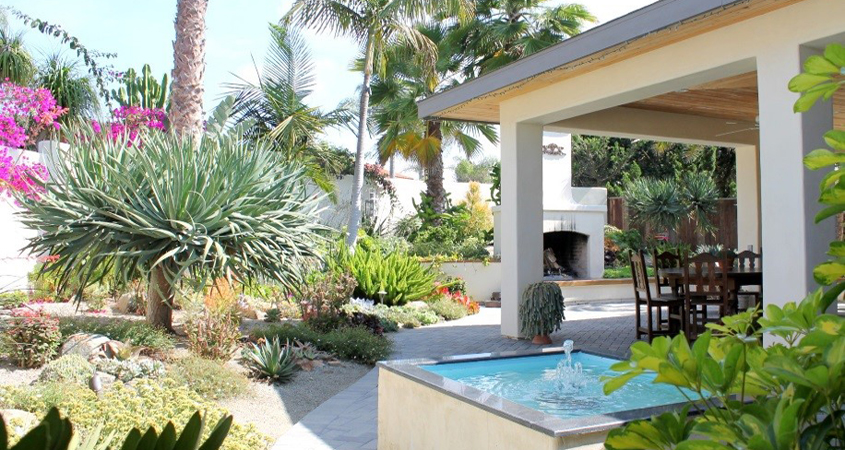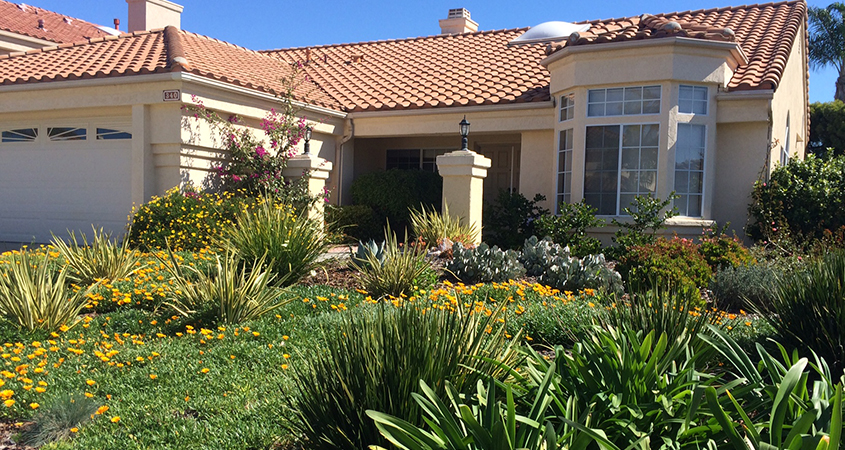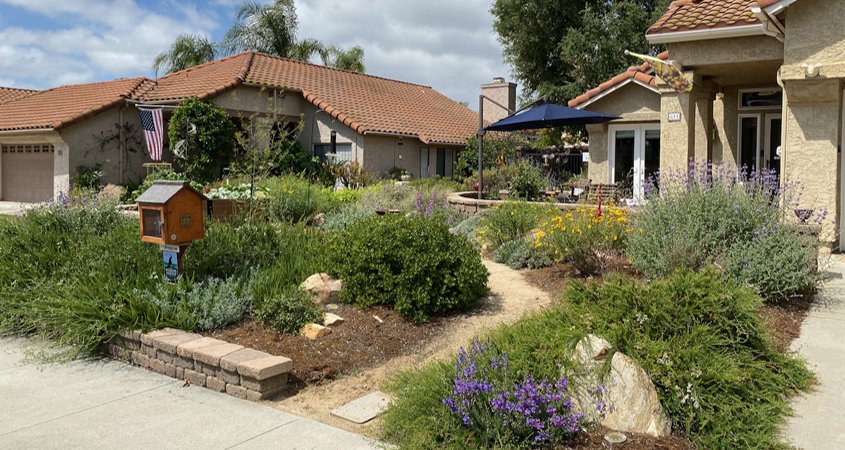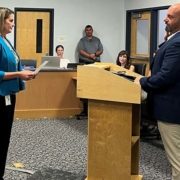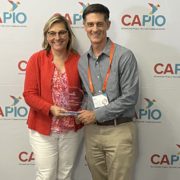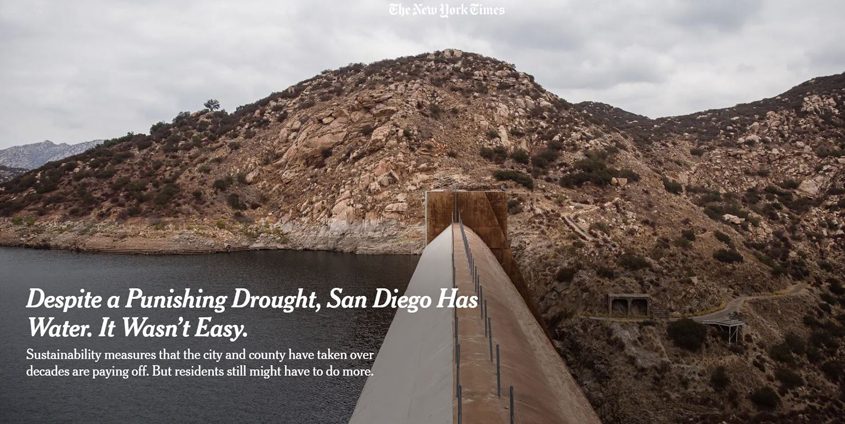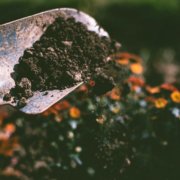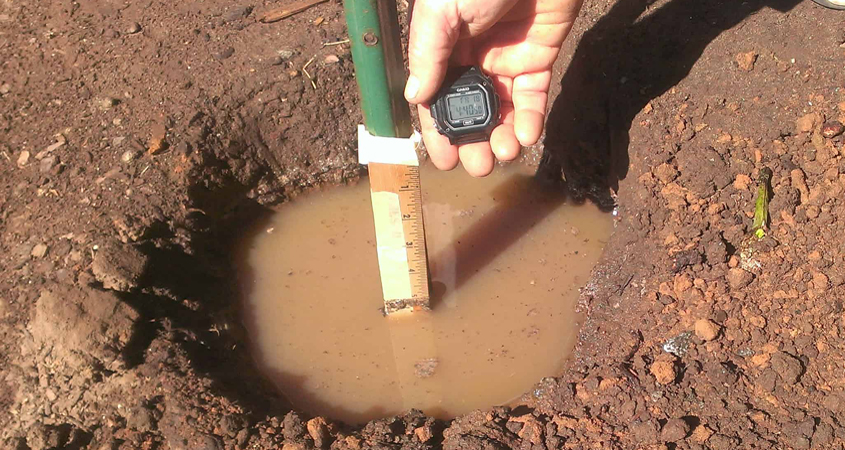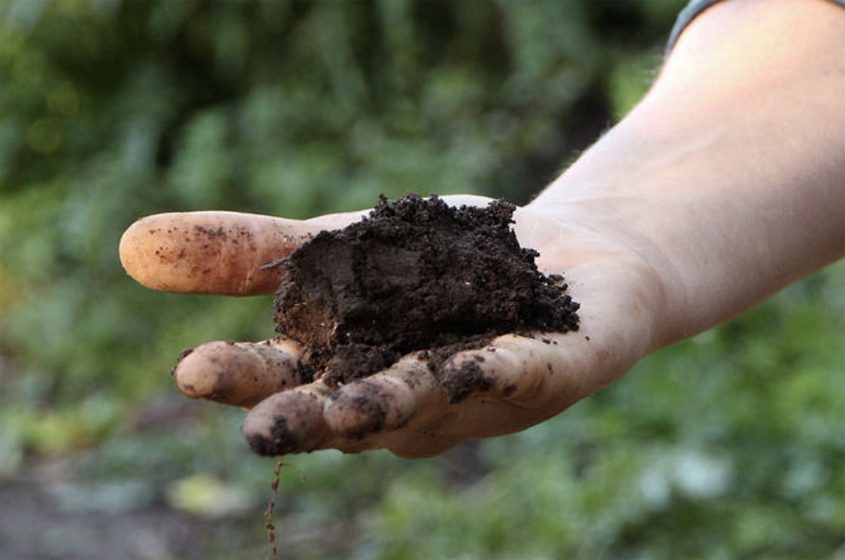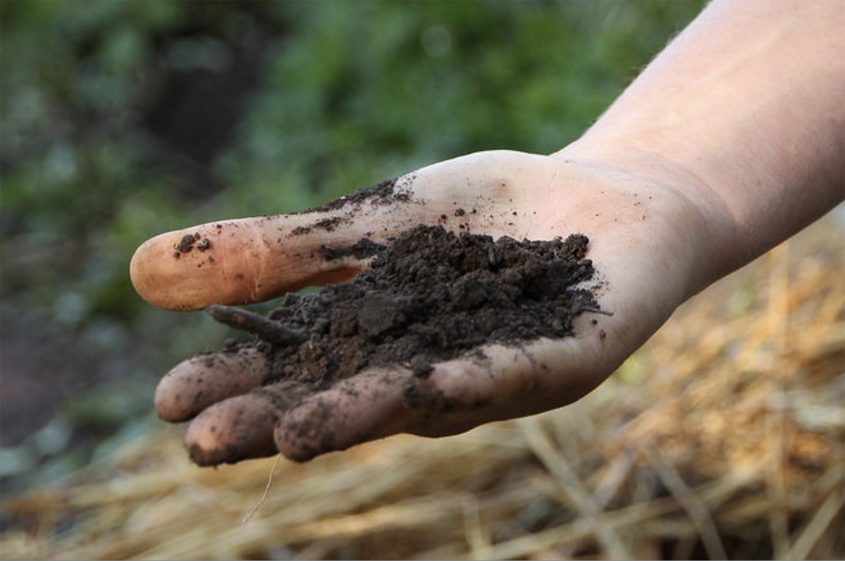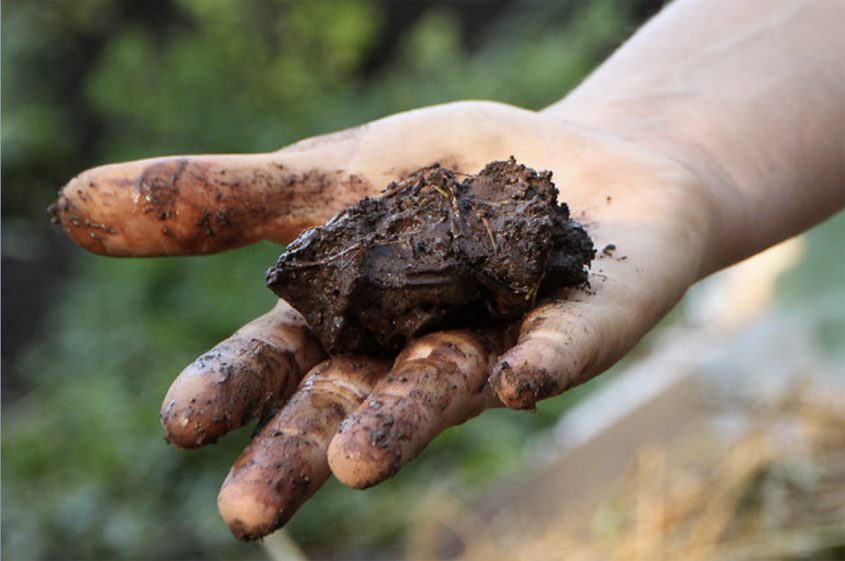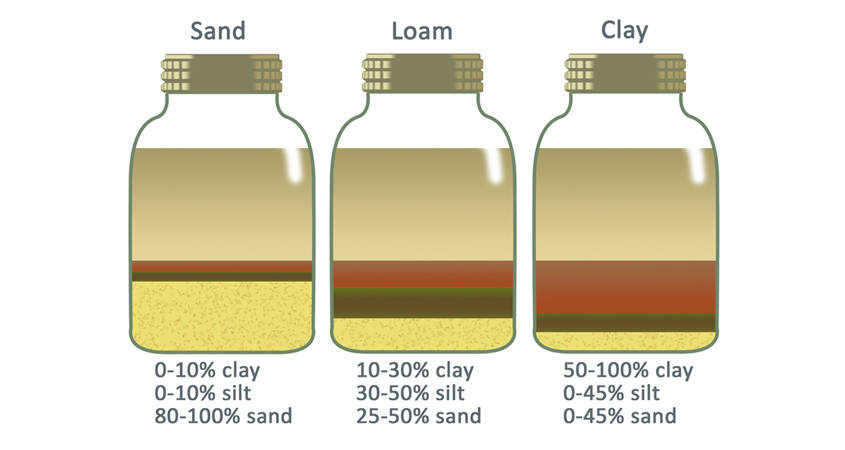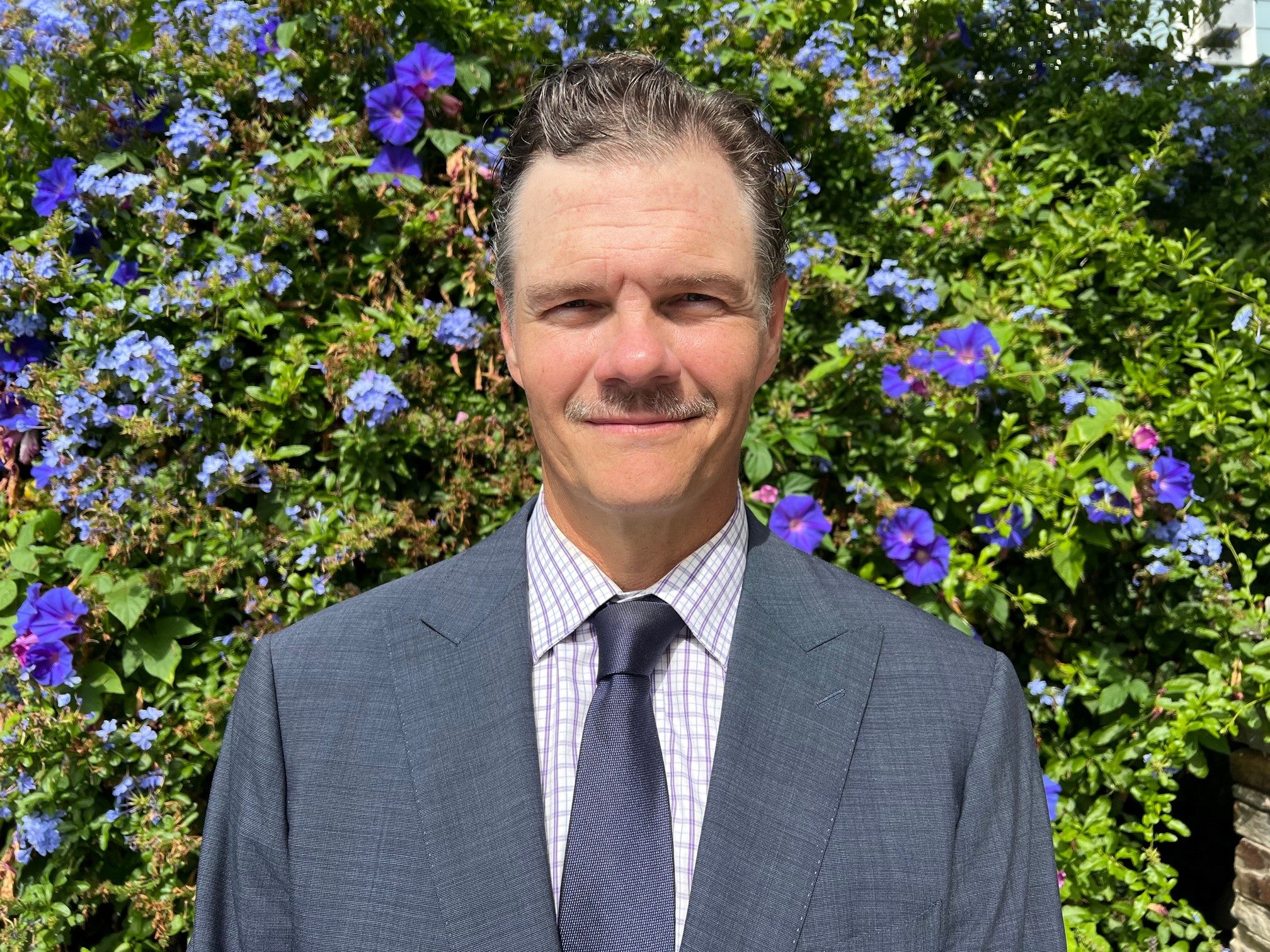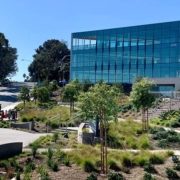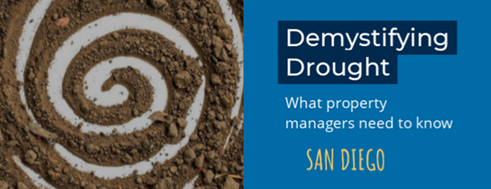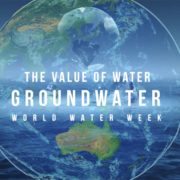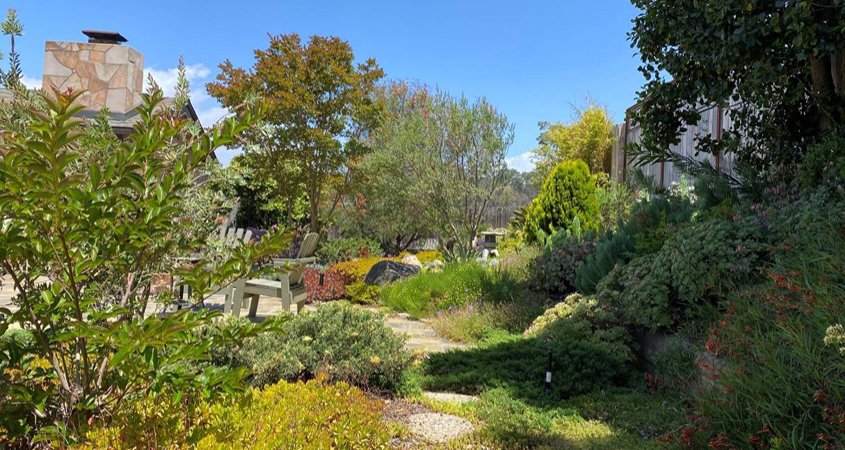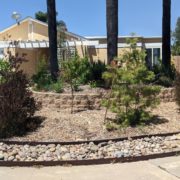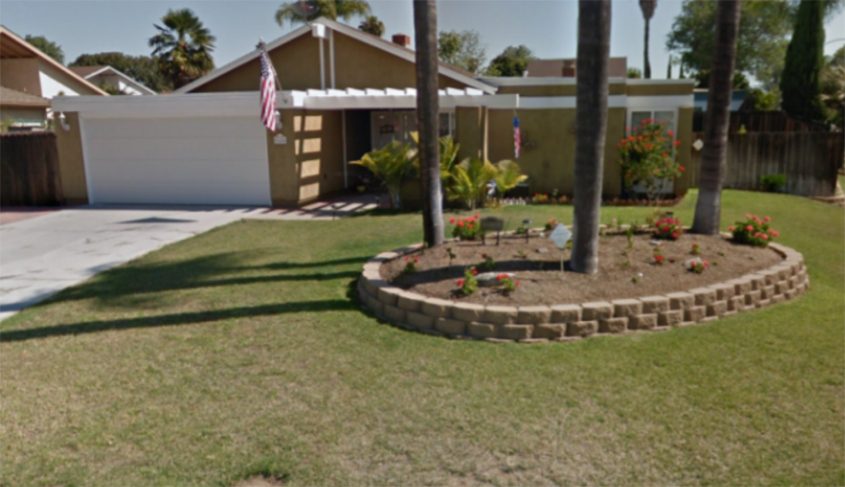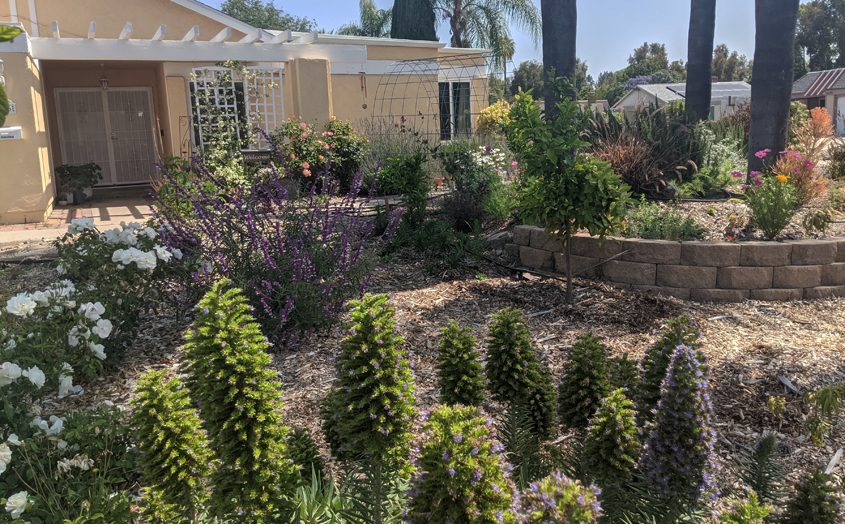Otay Poster Contest Winners Demonstrate the Value of Water Conservation
Five students from Chula Vista and El Cajon schools have been selected from 123 submissions as the winners of Otay Water District’s 2022 Water is Life Student Poster Contest. The annual contest helps to promote water-use efficiency through student art programs. The winners were selected based on their creativity and awareness of the importance of using water wisely every day and in times of drought.
The Otay Water District’s educational program invites K-12 grade students in its service area each year to enter the contest by illustrating the theme “Water is Life.” Entrants are encouraged to reflect on the importance of water conservation and stewardship and learn about this in the classroom prior to creating their posters.
“We are proud to see a young generation of students share their awareness about water conservation and stewardship when it matters most,” said contest coordinator Eileen Salmeron. “As California faces a drought, we hope students and their families understand that making small changes at home or school to conserve can make a big difference in building resiliency against drought.”
First- and second-place winners were selected from elementary and middle school categories. One winner was chosen in the high school category. The District’s board of directors recognized the winners at its September 7 meeting. Winners received prizes including a gift card, a certificate of recognition, an art kit, and a goody bag.
Otay Poster Contest Winners for 2022
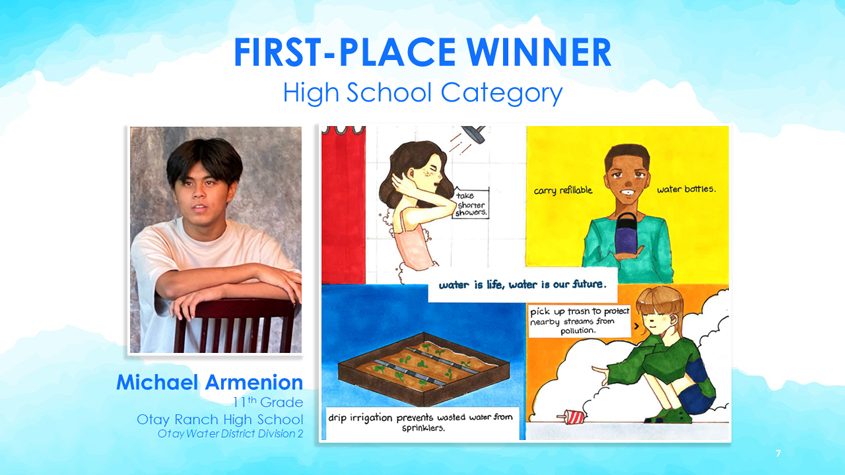
First place, high school: Michael Armenion, eleventh grade, Otay Ranch High School. Photo: Otay Water District
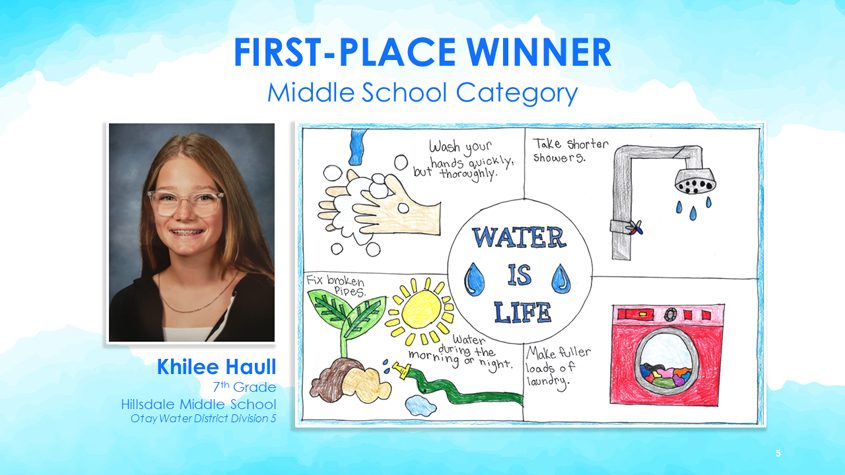
First place, middle school: Khilee Haull, seventh grade, Hillsdale Middle School. Photo: Otay Water District
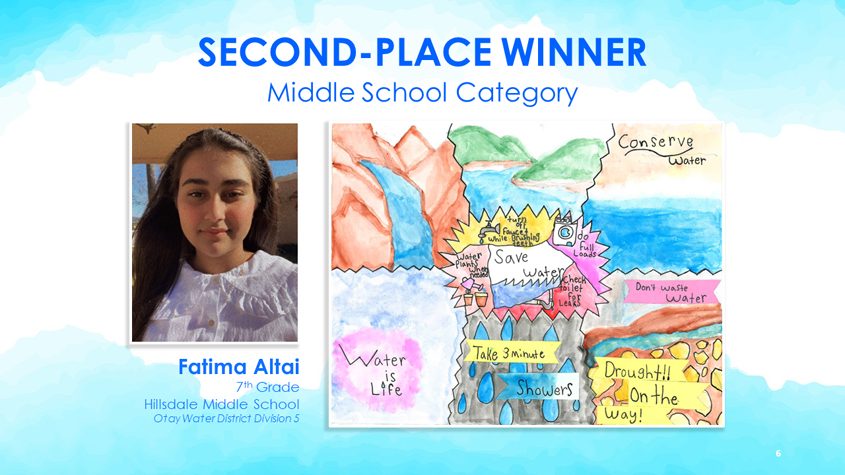
Second place, middle school: Fatima Altai, seventh grade, Hillsdale Middle School. Photo: Otay Water District
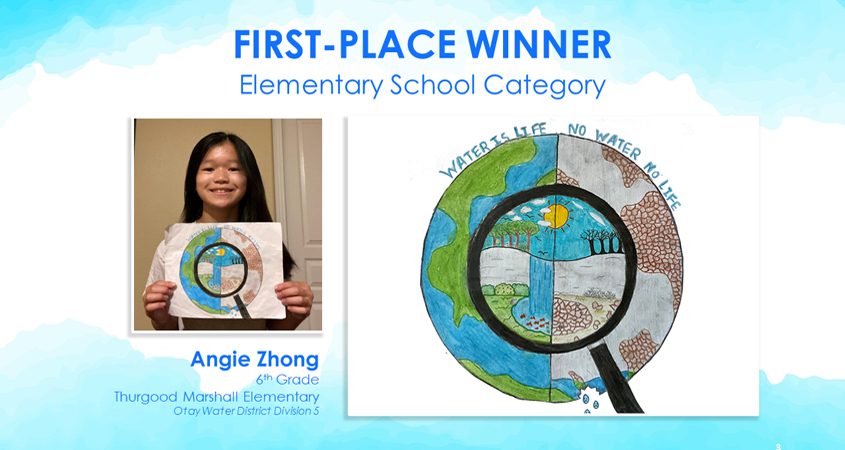
First place, elementary school: Angie Zhong, sixth grade, Thurgood Marshall Elementary School. Photo: Otay Water District
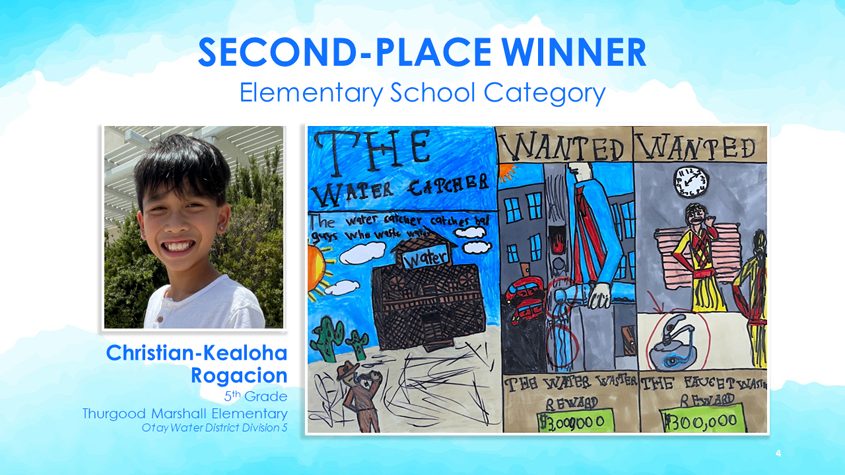
Second place, elementary school: Christian-Kealoha Rogacion, fifth grade, Thurgood Marshall Elementary School. Photo: Otay Water District
The Otay Poster Contest winners compete for regional awards in the Metropolitan Water District of Southern California’s annual student poster contest. Thirty-six posters are chosen from participating Southern California water agencies for inclusion in the 2023 MWD Water is Life calendar. This year, MWD selected Khilee Haull and Christian-Kealoha Rogacion to represent Otay Water District in MWD’s 2023 calendar.
(Editor’s note: The Otay Water District is one of the San Diego County Water Authority’s 24 member agencies that deliver water across the metropolitan San Diego region.)



